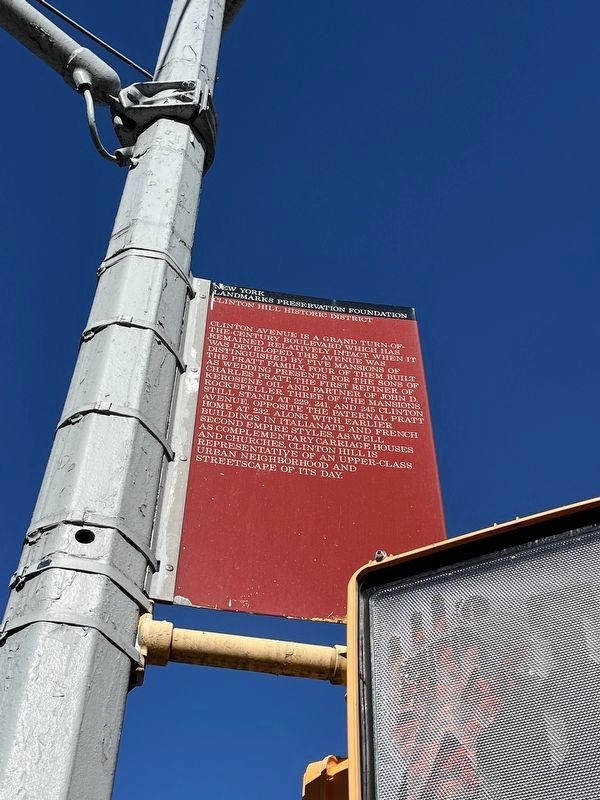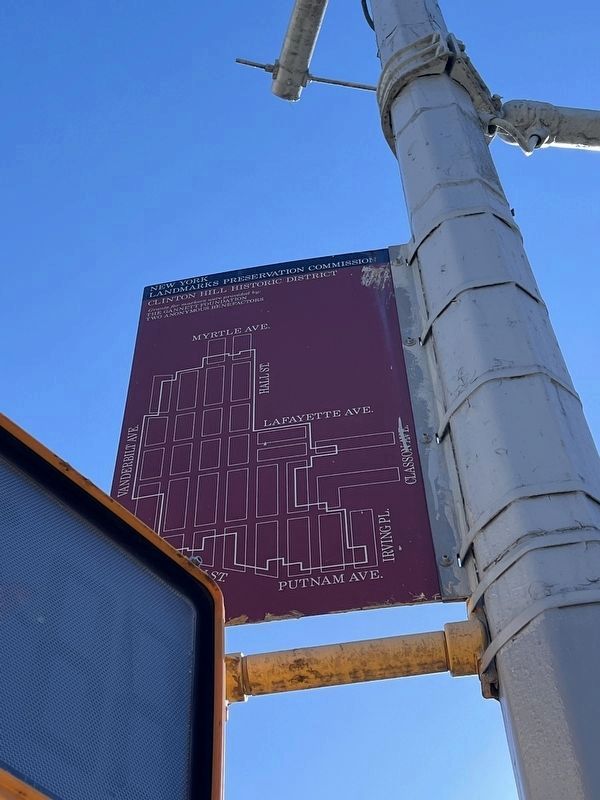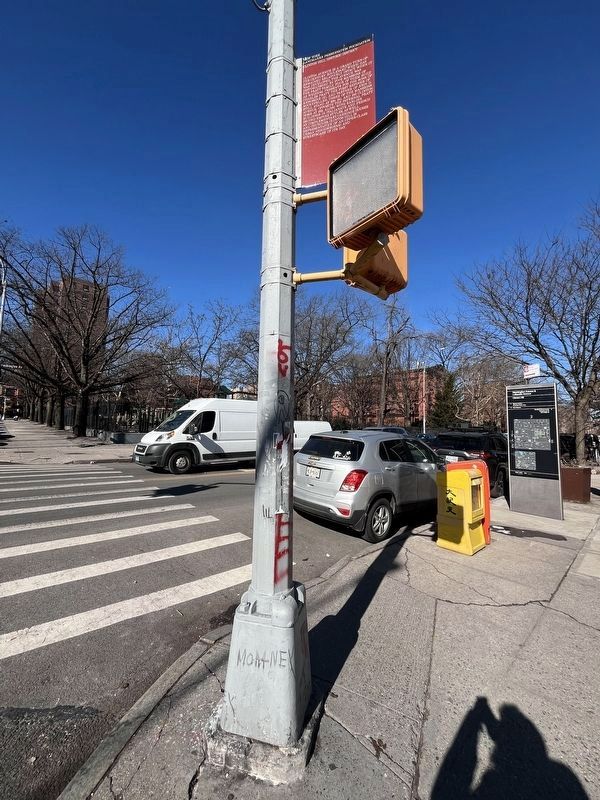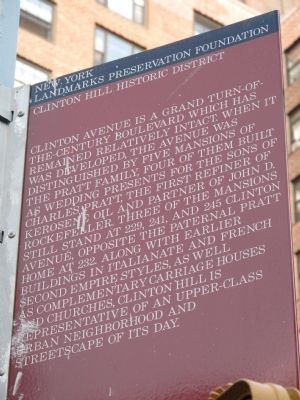Clinton Hill in Brooklyn in Kings County, New York — The American Northeast (Mid-Atlantic)
Clinton Hill Historic District
New York Landmarks Preservation Foundation

Photographed By Devry Becker Jones (CC0), February 16, 2024
1. Clinton Hill Historic District Marker
Erected by New York Landmarks Preservation Foundation.
Topics. This historical marker is listed in these topic lists: Architecture • Industry & Commerce • Settlements & Settlers.
Location. 40° 41.298′ N, 73° 57.945′ W. Marker is in Brooklyn, New York, in Kings County. It is in Clinton Hill. Marker is at the intersection of Washington Avenue and Lafayette Avenue, on the right when traveling north on Washington Avenue. Touch for map. Marker is at or near this postal address: 265 Washington Ave, Brooklyn NY 11238, United States of America. Touch for directions.
Other nearby markers. At least 8 other markers are within walking distance of this marker. A different marker also named Clinton Hill Historic District (about 600 feet away, measured in a direct line); a different marker also named Clinton Hill Historic District (approx. 0.2 miles away); a different marker also named Clinton Hill Historic District (approx. ¼ mile away); Fort Greene Historic District (approx. ¼ mile away); The Shoe Factory Building (approx. ¼ mile away); a different marker also named Clinton Hill Historic District (approx. ¼ mile away); Parkham Playground (approx. 0.3 miles away); Parham Playground (approx. 0.3 miles away). Touch for a list and map of all markers in Brooklyn.
More about this marker. In the 1830s and 1840s, Clinton Hill was a suburban retreat for property owners that erected “villas” removed from city life. As the city spread eastward, row houses filled in the lawns and grounds of the villas. Then the unexpected occurred. In the late 19th century several mansions replaced earlier homes. In Clinton Hill today, the traces of each of these periods of development remain.
The boundaries of the district are: on the west, Vanderbilt and Clinton Avenues; on the north, Willoughby Avenue; on the east, Hall and Downing Streets and Grand Avenue; and on the south, the blocks between Gates Avenue and Fulton Street.
Regarding Clinton Hill Historic District. Charles Pratt founded Pratt institute 6 blocks from his home, modeling it after Peter Cooper's Cooper Union, a benevolent gift of advancement for the labor force to take advantage of superior technical training that would lead to prosperous careers and flourishing urban planning. His original home located at 136 Clinton Ave described as a Pre-Civil war clapboard Greek Revival has been used as a occupancy for various Catholic Diocese Bishop's since 1938 until its current resident Nicholas Anthony DiMarzio who in 2003 became the seventh Bishop of the Diocese of Brooklyn. Fort Green's is now L. I. University and Clinton Hill area is St. Josephs College of Technology, CUNY, and NYU today.
The reason for all of this that Pratt wanted the people to solve the problems of education, housing, health and pollution.
Also see . . .
1. Clinton Hill - Wikipedia. (Submitted on September 6, 2010, by Bill Pfingsten of Bel Air, Maryland.)
2. Clinton Hill Historic District - National Archives. National Register of Historic Places documentation (Submitted on February 25, 2024, by Anton Schwarzmueller of Wilson, New York.)

Photographed By Devry Becker Jones (CC0), February 16, 2024
3. Clinton Hill Historic District Marker

Photographed By Devry Becker Jones (CC0), February 16, 2024
4. Clinton Hill Historic District Marker
Credits. This page was last revised on February 25, 2024. It was originally submitted on August 31, 2010, by Bonnie Page of New York, New York. This page has been viewed 971 times since then and 21 times this year. Photos: 1. submitted on February 19, 2024, by Devry Becker Jones of Washington, District of Columbia. 2. submitted on August 31, 2010, by Bonnie Page of New York, New York. 3, 4. submitted on February 19, 2024, by Devry Becker Jones of Washington, District of Columbia. • Bill Pfingsten was the editor who published this page.
Editor’s want-list for this marker. A wide view photo of the marker and the surrounding area together in context. • Can you help?
